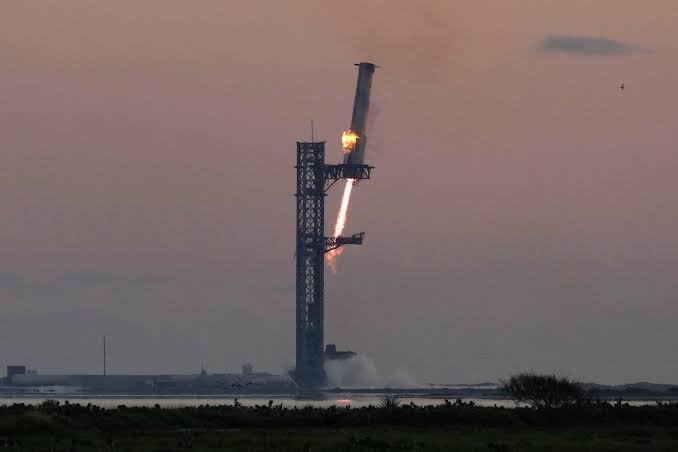
Elon Musk’s Starship rocket has achieved a significant milestone by being captured on its return to the launch pad. The lower half of the SpaceX vehicle was maneuvered back beside its launch tower and caught in a giant pair of mechanical arms during its fifth test flight. This achievement brings SpaceX closer to its goal of developing a fully reusable and rapidly deployable rocket. Engineers at SpaceX declared it “a day for the history books” as the booster landed safely. The successful capture of the Super Heavy booster on the first attempt was unexpected, as it was initially anticipated to land in the Gulf of Mexico.
SpaceX has made remarkable progress in the past two test flights, following the failure of its inaugural flight eighteen months ago. The company views these failures as part of its development plan, aiming to gather valuable data and expedite system development. The fifth test flight followed a similar pattern to the previous one, with the Ship and booster separating after two and three-quarter minutes. The booster then headed back to the launch site in Boca Chica, Texas.
Cheers erupted in mission control when the flight director approved the landing attempt, which required meeting thousands of criteria. As the Super Heavy booster re-entered the atmosphere, it decelerated from speeds exceeding thousands of miles per hour. The booster’s raptor engines controlled its landing as it approached the 146m-high (480ft) landing tower. The Ship, where equipment and crew will be housed for future missions, successfully landed in the Indian Ocean around forty minutes later. Elon Musk celebrated the precise landing and the unexpected preservation of some of the vehicle’s hardware. The use of the mechanical arms to capture the booster reduces the need for complex ground hardware and enables rapid redeployment of the vehicle.
Elon Musk’s vision for the rocket system includes human missions to the Moon and Mars, aiming to make our species “multi-planetary.” NASA, which has paid SpaceX $2.8bn (£2.14bn) to develop Starship as a lunar lander, is pleased with the successful flight. However, SpaceX faced challenges from the Federal Aviation Administration (FAA), which had initially prohibited the launch before November due to permit reviews.
The FAA and SpaceX were involved in a public dispute after the agency sought to fine SpaceX $633,000 for alleged license violations. The FAA’s environmental impact review focuses on the immediate environment from rocket launches, but experts highlighted concerns about black carbon emissions from rockets, particularly from the use of liquid methane propellant.